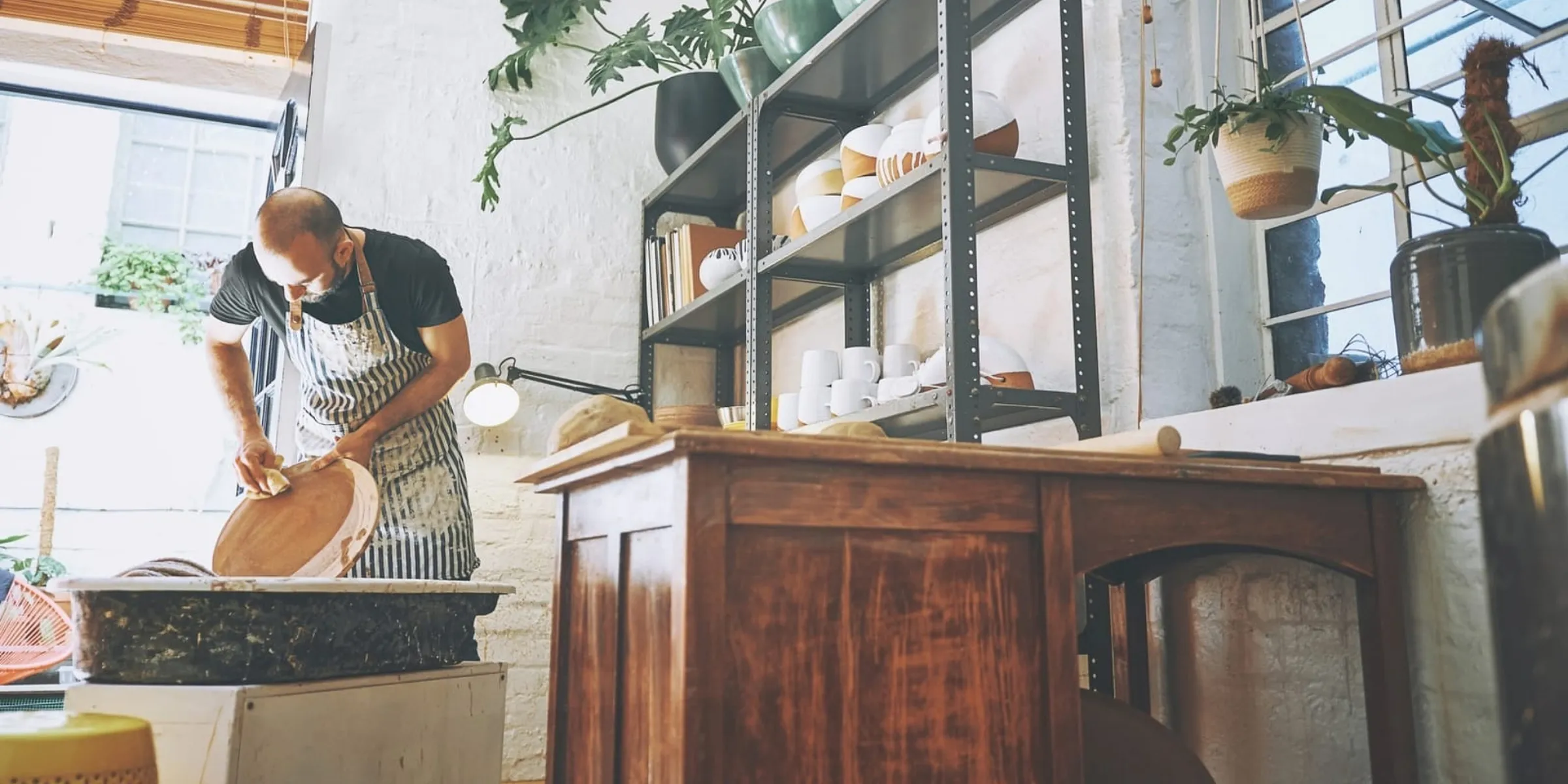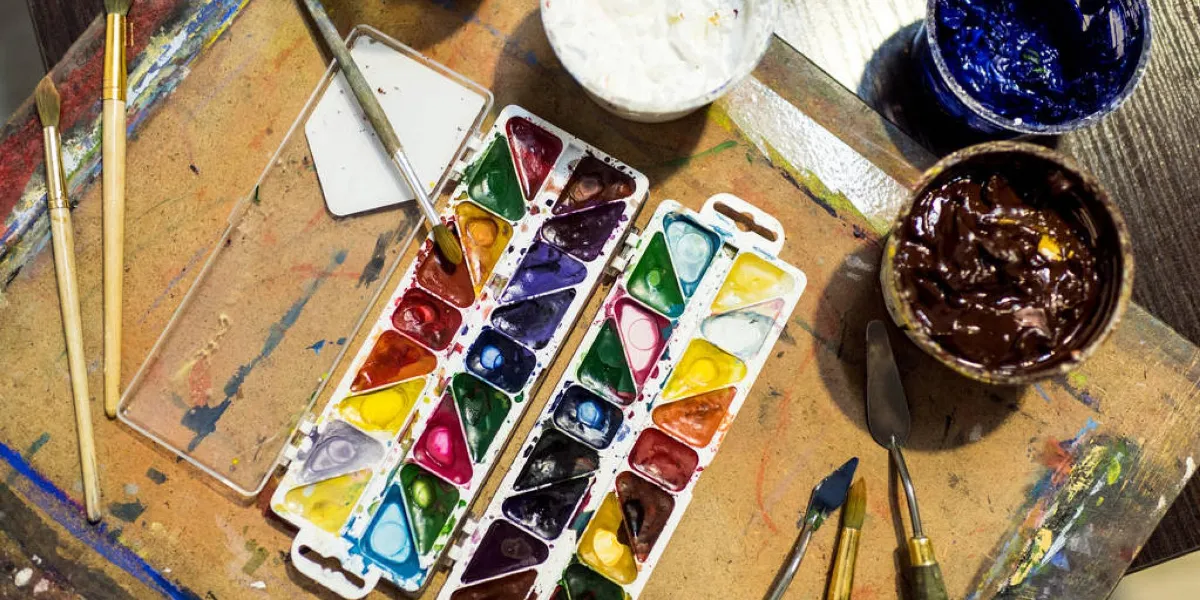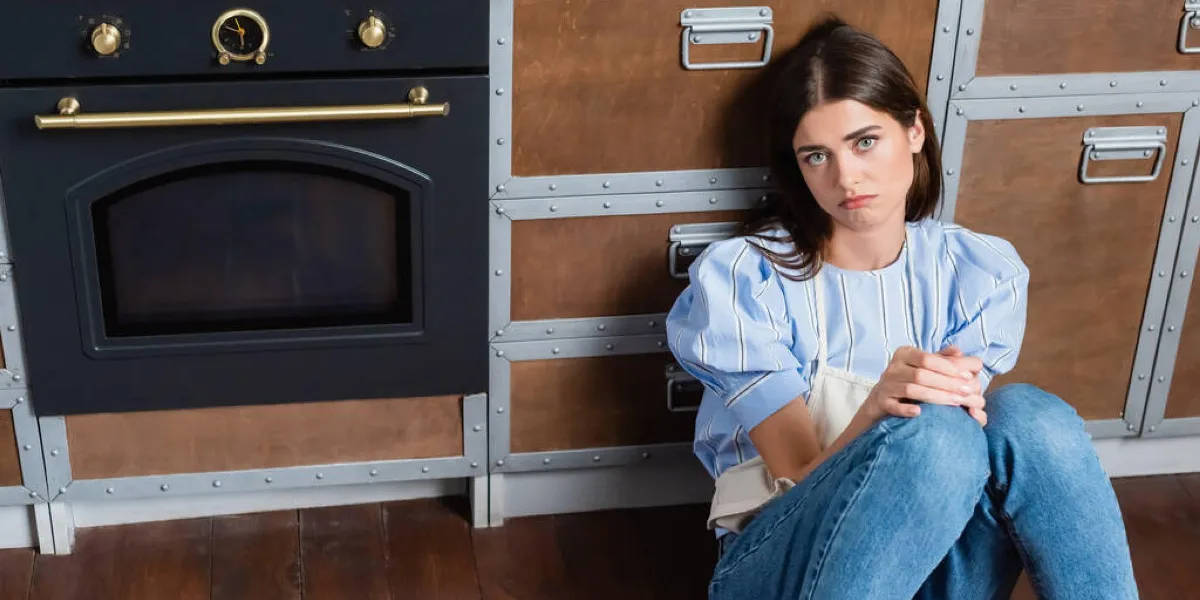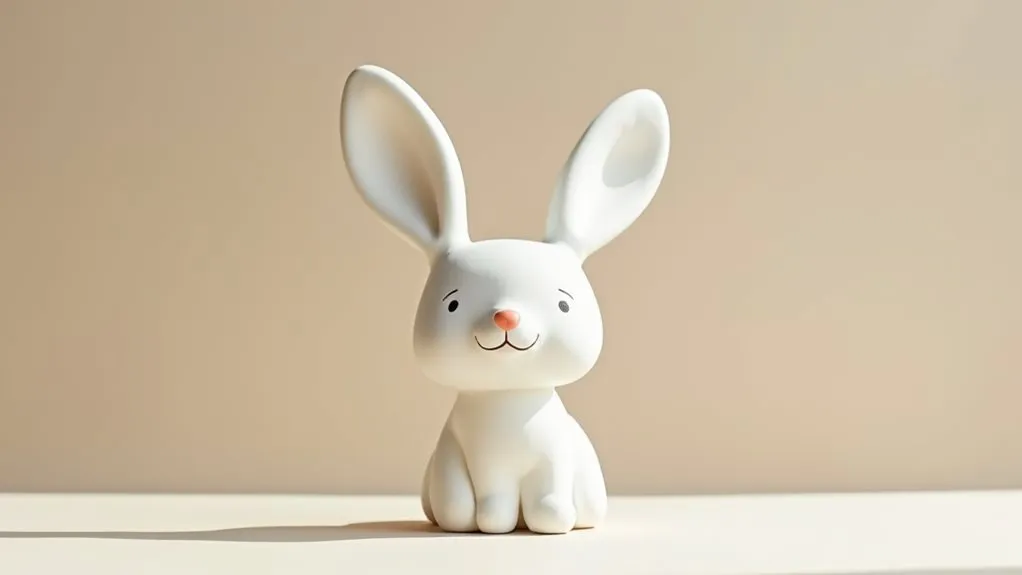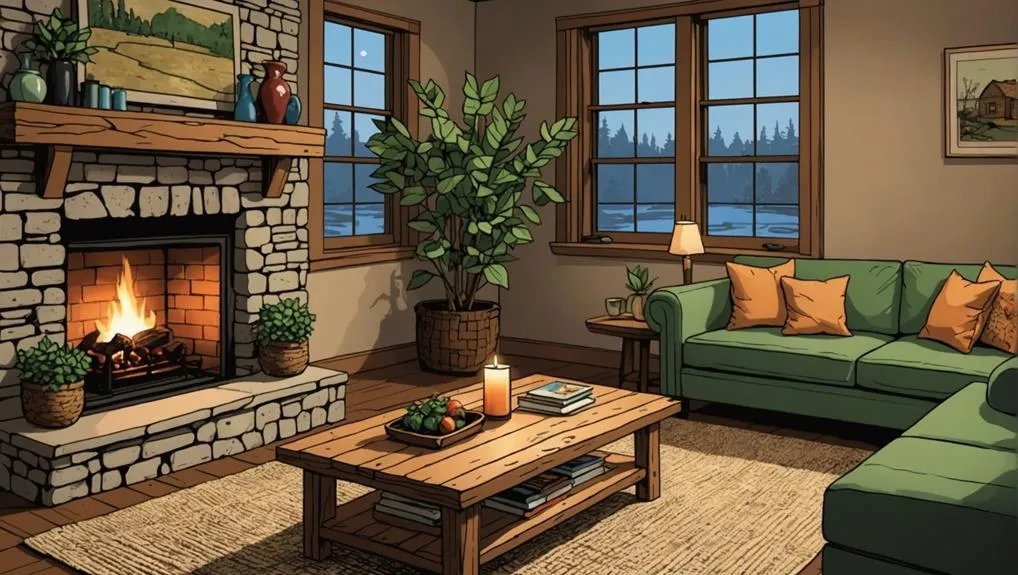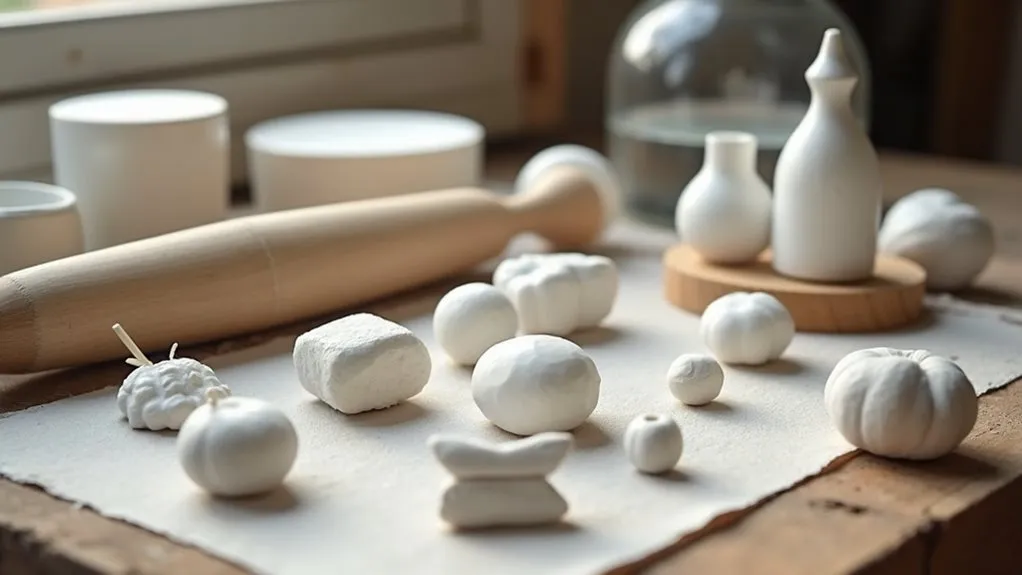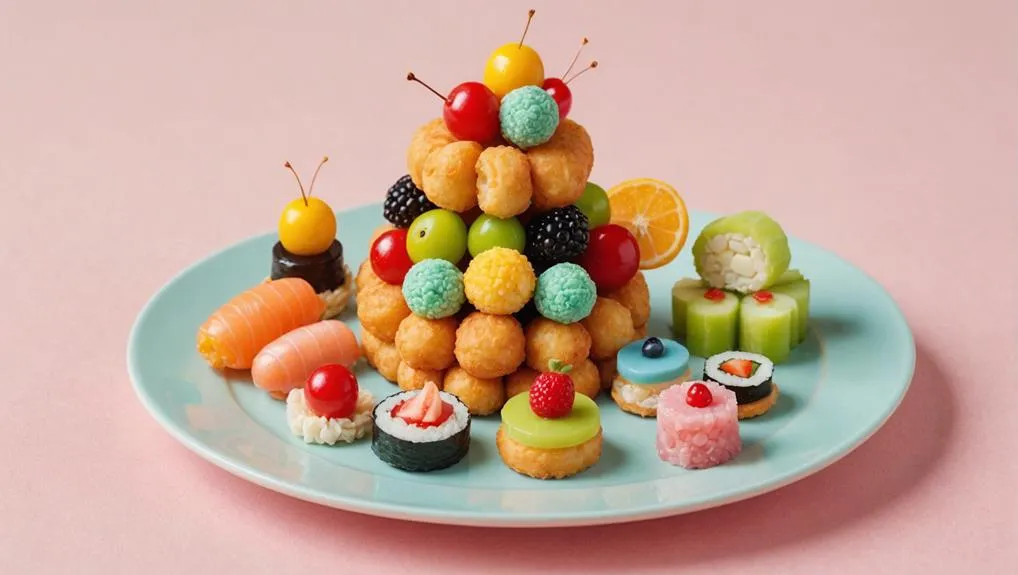Have you ever wondered if it is possible to bake air dry clay?
You can bake air dry clay to speed up the hardening process of your creation. It is recommended to use a low temperature of 200 degrees Fahrenheit/90 degrees celsius. The baking time will differ based on the thickness of the clay.
Note that it isn’t necessary to bake this type of clay. As the name suggests, air dry clay does not need to be baked as it will harden and dry on its own when left to air dry. Baking is typically done with polymer clay, not air-dry clay.
Air dry clay is a type of clay that does not require baking in a kiln or oven to harden. It is a popular choice among hobby crafters and artists due to its convenience and ease of use.
It is made from natural clay, paper fibers, and water mixture, which creates a pliable and moldable material.
Once the clay is shaped into the desired form, it is left to air dry and harden naturally over time. The drying time can vary depending on the thickness of the clay and environmental conditions.
Air dry clay projects can range from simple and small pieces to more complex projects. It is a versatile option that can be used for a variety of creative endeavors.
Benefits of Air Dry Clay
This type of clay has become very popular with artists, hobby crafters, and students alike. One of the main advantages is its affordability, making it accessible to a wide range of individuals. Additionally, air dry clay is easy to use, even for beginners, as it requires no special equipment or firing process.
Another advantage of air dry clay is its availability in various colors. This allows artists to create vibrant and colorful projects without the need for additional painting. The ability to air dry also makes it an excellent choice for schools and artists without access to a kiln.
However, it is important to note that air dry clay does have a downside of longer drying time compared to other types of clay. This means that patience is required when working with this material, as projects may take several days or even weeks to fully dry and harden.
Can Air Dry Clay Be Baked?
Yes, air dry clay can be baked to expedite the drying process and achieve a stronger, more durable result. Baking air dry clay is especially useful when time is limited or when you need the clay to dry evenly and quickly.
Set your oven to the lowest temperature setting, usually around 200-250°F (93-121°C). Avoid using higher temperatures, as they can cause the clay to crack or burn.
Shape your air dry clay into the desired form or mold. For thicker pieces or complex projects, ensure that the clay is evenly distributed to prevent cracking during the drying process.
Line a baking tray with parchment paper to prevent the clay from sticking. Place your air dry clay creations on the baking sheet, leaving some space between each piece.
Put the baking sheet with the clay in the preheated oven. The baking time will vary depending on the thickness of the clay and the oven temperature. Generally, it takes around 30 minutes to an hour for small to medium-sized pieces. Larger or thicker pieces may require more time.
Regularly check the clay while it’s baking to prevent over-drying or burning. Adjust the temperature or baking time if needed. If you notice any cracks forming, lower the oven temperature or cover the clay with aluminum foil to slow down the drying process.
Once the clay is baked, remove it from the oven and allow it to cool completely before handling or painting. If desired, you can apply an acrylic sealer to protect the clay and enhance its finish.
Note: It’s essential to follow the manufacturer’s instructions that come with your specific air dry clay. Be sure to check for any warnings regarding oven baking and where possible allow your work to dry out naturally.
Thicker pieces of clay or complex projects may require longer drying times, while factors such as humidity and temperature can also affect the drying process. By understanding the different types of air dry clay and their specific drying methods, artists and hobbyists can create beautiful clay projects with ease.
Types of Clay
Air dry clay is a popular choice among hobby crafters and artists for its ease of use and convenience, but it’s not the only type of clay avaiable to you.
Crayola Air Dry Clay
Crayola Air Dry Clay is a versatile and popular choice for both children and adults alike. This unique type of clay offers a convenient and mess-free drying process, eliminating the need for baking or firing in a kiln. Hence, it can be used right out of the box without any additional materials or equipment.
Unlike traditional clay, Crayola Air Dry Clay does not require high temperatures or a hot oven for drying. Instead, it air-dries naturally over time, saving both energy and effort. This makes it a safe and convenient option for young children to explore their creativity.
Crayola Air Dry Clay is also distinct from polymer clay, as it does not contain polyvinyl chloride (PVC) or any other complex chemicals. It is made from a natural clay composition that includes a blend of paper fibers and natural moisture content. This ensures a smooth and pliable texture that is easy to shape and mold.
Available in a variety of vibrant colors, Crayola Air Dry Clay allows for endless creative possibilities. Choose from classic colors such as red, blue, and yellow or experiment with unique shades like neon pink or metallic gold. Each package comes with clear instructions and helpful tips to inspire creative minds.
Whether you are a hobby crafter or an experienced artist, Crayola Air Dry Clay offers a convenient and enjoyable method for creating beautiful and long-lasting clay projects. Its versatility, non-toxic nature, and user-friendly drying process make it an ideal choice for both children and adults.
Polymer Clay
Polymer clay is a versatile and moldable material that is widely used in various art and craft projects. It is a synthetic modeling clay that can be baked in a regular kitchen oven to achieve a durable and long-lasting finish. Unlike air dry clay and traditional clays, polymer clay requires heat to set and harden.
One of the key properties of polymer clay is its pliability. It is soft and easy to shape, allowing for intricate details and complex designs. This makes it a popular choice among hobby crafters and professional artists alike. Polymer clay is available in a wide range of vibrant colors and can be mixed together to create custom shades. It can also be used with various techniques and mixed media, such as stamping, painting, and adding texture.
Popular brands of polymer clay include Sculpey, Fimo, and Cernit. Each brand offers a variety of colors, finishes, and special effect clays to suit different artistic preferences. Many polymer clay artists appreciate its versatility and the ability to achieve professional-looking results.
Baking polymer clay is a straightforward process. Simply place your creations on a baking sheet lined with parchment paper or aluminum foil, and preheat your oven according to the manufacturer’s instructions. Most polymer clays bake at a low temperature, usually between 200-275°F (93-135°C), for a specific amount of time, typically ranging from 10-30 minutes per 1/4 inch (6mm) thickness of clay. It is important to monitor the baking process to prevent over or under-baking.
Once baked, polymer clay hardens and becomes durable, making it suitable for jewelry, sculptures, and other decorative items. After cooling, it can be sanded, buffed, and sealed with an acrylic sealer for a glossy or matte finish.
In conclusion, polymer clay offers a wide range of creative possibilities due to its pliability, vibrant colors, and compatibility with various techniques. Its ability to be baked in a kitchen oven makes it a convenient choice for artists and crafters looking to create durable and professional-looking pieces. So, whether you are a beginner or an experienced artist, polymer clay is an excellent option to explore and unleash your creativity.
Traditional Clays
Unlike air-dry clay, traditional clays require kiln firing to achieve the desired hardness and durability. These clays have been used for centuries in pottery and ceramics and offer unique characteristics and advantages.
Earthenware clay is a popular choice for beginners as it is easy to work with and has a low firing temperature. It is known for its warm, earthy colors and porous texture, which makes it suitable for decorative pieces and functional pottery like vases and bowls.
Stoneware clay is ideal for functional pottery and sculptural works due to its durability and higher firing temperature. It has a wide firing range and can create objects ranging from delicate to sturdy. Stoneware clay is known for its natural earth-toned colors and is often used for dinnerware, mugs, and larger vessels.
Porcelain clay is prized for its pure white color and translucency when fired. It is considered the most delicate and refined of the traditional clays and requires high firing temperatures. Porcelain is often used to create intricate and delicate pieces such as fine china, decorative items, and jewelry.
One advantage of traditional clays is their ability to handle high temperatures, resulting in strong and durable finished pieces. Additionally, traditional clays offer a wide range of textures, finishes, and glaze options, allowing artists to create unique and personalized works of art.
Although traditional clays require a kiln for firing, the process offers greater control over the final result. This makes traditional clay a preferred choice for professional potters and ceramic artists seeking to achieve complex and detailed projects.
Tips and Techniques for Working with air dry clay
Working with air dry clay can be a fun and versatile medium for various art and craft projects. To help you get the best results, here are some tips and techniques for working with air dry clay.
1. Keep it Moist: Unlike other types of clay, air dry clay can dry out quickly. To prevent cracking and ensure easy manipulation, keep the clay moist by lightly spritzing it with water or storing it in an airtight container when not in use.
2. Use a Well-Ventilated Area: When air drying your clay projects, choose a well-ventilated area. This allows for better air circulation and helps the clay to dry evenly without cracks. Avoid drying in humid or cold environments, as this can prolong the drying time.
3. Consider a Dehydrator: If you prefer a faster and more controlled drying process, you can use a food dehydrator. Set it to a low temperature and place your clay creations inside. This method helps to speed up the drying time and reduces the risk of cracking.
4. Prevent Cracking: To reduce the chances of cracking while drying, avoid creating thick or bulky structures with air dry clay. Instead, work on multiple pieces simultaneously, allowing them to air dry in stages. This rotation between making and drying helps to prevent uneven drying and cracking.
5. Use a Hairdryer with Caution: If you’re in a hurry and need to speed up the drying process, you can use a hairdryer on low heat. However, exercise caution and avoid holding the hairdryer too close to the clay, as this can cause the surface to dry too quickly and lead to cracks.
By following these tips and techniques, you can enhance your experience with air dry clay and create beautiful, crack-free projects. Remember to experiment and have fun exploring the possibilities this medium offers.
Final Thoughts
In conclusion, air dry clay offers a fun and versatile medium for a wide range of art and craft projects. By understanding the tips and techniques for working with air dry clay, you can create beautiful pieces without the worry of cracking. With a little practice and exploration, you can unlock the potential of this medium and create stunning works of art.


